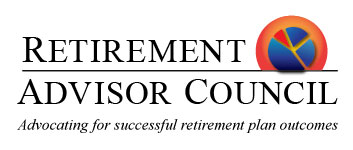
The Setting Every Community Up for Retir1ent Enhanc1ent ("SECURE") Act, which was signed into law on Dec1ber 20, 2019, is being hailed as the most significant retir1ent savings reform since the Pension Protection Act in 2006.
So what does the legislation mean for plan advisors, service providers and investment managers? Plan amendments, changes in syst1s and procedures, new education and training, and, last, but certainly not least, many, many opportunities to increase plan coverage and savings.
This article highlights eight key actions to be taken to impl1ent and comply with the SECURE Act provisions for qualified defined contribution ("DC") plans, as well as opportunities to discuss with plan sponsors changes in investment line up and other features of their DC plans. Please note that the CARES Act, the coronavirus economic stimulus package, has extended a few of the SECURE Act effective dates, and other effective dates are subject to further delay.
The SECURE Act also provides opportunity to approach 1ployers that have not yet established a plan for their workforce. Here are a few action it1s and suggestions pertaining to the SECURE Act:
- Review with plan sponsors procedures to comply with SECURE Act requir1ents that are immediately effective (amendments to plan documents required by 12.31.2020):
- Eliminate plan credit card loans;
- R1ove restrictions on distribution of lifetime income investment that is no longer authorized to be held in the plan;
- Permit penalty-free, in-service distribution for "qualified disasters", with the ability to recontribute the distribution within three years;
- Permit penalty-free, in-service distribution for "qualified birth or adoption";
- Increase required minimum distribution age to 72 years old (the CURES Act permits waiver of all RMDs to be made in 2020);
- Limit "stretch RMD".
- Review with plan sponsors opportunities for increasing savings and retir1ent security that are immediately available:
- Increase safe harbor cap on automatic enrollment and auto-escalation to 15% for years after the first plan year in which the 1ployee is automatically enrolled;
- Discuss with small 1ployers (up to 100 1ployees) their eligibility for a $500 credit for up to three years, if they add auto-enrollment
- Take advantage of the fiduciary safe harbor for selection of an annuity provider to provide an in-plan annuity investment option, or a lifetime income distribution option.
- Begin discussing with plan sponsors process steps to comply with new requir1ents to take effect in future years:
- Coverage of long-term, part-time 1ployees (mandatory) for plan years beginning Dec1ber 31, 2020, except that for purposes of the new eligibility requir1ents, the 12-month period before Dec1ber 31, 2020 need not be taken into account;
- Lifetime income disclosure: must be added to annual stat1ents furnished more than 12 months after the latest issuance of DOL's issuance of interim final rules providing guidance on a model disclosure or permissible assumptions. Start talking about assumptions, models and how to most effectively build on the disclosure to help participants understand the value of their savings.
- Take advantage of the buzz and seize the opportunities that may arise from the SECURE Act. Advisors and Service Providers should meet with plan sponsors to discuss the various opportunities, new tax credits, changes in plan notices and education delivered to plan participants, as well as impl1entation challenges of the new law. Set up a time frame for making decisions about possible changes. Significant provisions for DC Plans include:
- Increased auto-enrollment caps;
- Addition of lifetime income options as a plan investment and a distribution option;
- Prospective electronic delivery of plan communications once the Treasury proposed rule on e-delivery becomes finalized.
- Start working on syst1 changes, plan amendments and participant notice changes.
- The SECURE Act includes many required changes to plans to increase coverage, to help increase financial literacy of plan participants, and otherwise:
- Required coverage of long-term, part-time 1ployees. Vesting schedules need to be changed to accommodate these workers; however, the SECURE Act does not preclude plan sponsors from vesting these 1ployees on the same schedule as other 1ployees;
- Provision of lifetime income disclosure - need to determine model and assumptions per DOL guidance;
- Increase in the Required Minimum Distribution age to 72 (see IRS Notice Notice 2020-6, providing relief for financial institutions who provided erroneous information to IRA account holders who reach the age of 70 ½ in 2020);
- Penalty free withdrawal of up to $5000 upon the birth or adoption of a child;
- Penalty free distributions or loan up to $100,000 for disaster relief from January 18 through February 18, 2020;
- Changes to stretch IRA to require distributions within 10 years unless exceptions;
- Repeal of age limitations for contributions to IRAs.
- Train Contact Center Staff
- Educate Call/Contact Center staff regarding the plan amendments and procedure changes so they can accurately respond to 1ployees.
- Opportunities to increase coverage - increase the buzz and meet with prospects - 1ployers that have not yet established their own plans
- Discuss with service providers their plan to offer:
- Open pooled 1ployer plans/ open MEPs
- Plan aggregation with consolidated Form 5500
- Inform 1ployers of the tax credits available for both setting up a new plan, as well as adding automatic enrollment.
- Discuss with service providers their plan to offer:
Don't forget to meet with plan sponsors to discuss required changes to comply with the SECURE Act, as well as opportunities to increase savings and enhance retir1ent security preparedness of plan participants. Finally, <1>join the Retir1ent Advisor Council's Government Affairs Committee </1>to participate in discussions regarding regulatory guidance that will define important provisions of the plan such as lifetime income disclosure models.







































